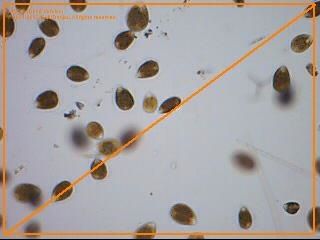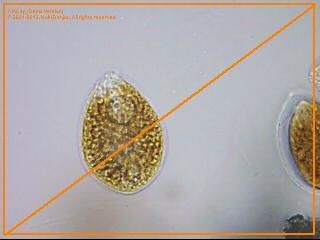
 |
|
#1
|
|||||
|
|||||
|
So about a month ago I bought a maxspect razor led for my tank. Since then i have been on an ever going battle with some kind of brownish stringy algae that is beginning to destroy my tank. It is only on for 8 hours a day and 3 hours just blue. It ramps up from 10:30 and for 2 hours of the day i have blues at 80% and whites at 70% and then it goes back down. I have the light about 2 ft from my water, I syphon my sand, iv tried doing many water changes, iv tested my water and everything seems ok. But this stupid brown **** just keeps coming back, more and more. It also appears that there are little bubbles in with this algae. I tried chemiclean and it didn't do anything. If anything it appears worse. Im just about ready to start piecing this tank out if I can't beat this. So if anybody out there can suggest or tell me whats up id really appreciate it. Because I'm gonna lose my mind dealing with this stupid tank. Thanks again.
|
|
#2
|
|||||
|
|||||
|
Add more flow and do a 75% water change IMO
__________________
Guide to building super awesome rock structures / my tank journal http://www.canreef.com/vbulletin/sho...d.php?t=116410 |
|
#3
|
|||||
|
|||||
|
i messed with the powerheads last night and the flow is pretty intense. And I'm working on doing a massive water change… AGAIN. hope it helps. but so far nothing seems to.
|
|
#4
|
||||
|
||||
|
Could be dinos hard to diagnose though
H202 will help if done correctly
__________________
........ |
|
#5
|
|||||
|
|||||
|
do they get tiny bubbles in them by the end of the day? If they're brown and stringy to me it sounds like dinoflagellates but you'd need to confirm that with a microscope.
There's a bajillion different kinds of dinos, some are horrific, toxic, poisonous and just generally awful - think red tides and shellfish not suitable for human consumption, and some are just unsightly and darn persistent but otherwise seemingly harmless. Hard to know which one you've got, but if all of a sudden all your slime eating snails like Astreas suddenly kack it en mass there's a good chance you've got one of the less friendly kinds. I also wouldn't be so quick to link it to the lights. They can happen regardless of your lighting system and are known to occur in tanks lit by pretty much every kind of technology in the trade. ETA just re-red your initial post and you said they do in fact get bubbles. That to me sounds like dinos. The most obvious time to look for them is on your rocks at the end of the day right before lights out. If you look at an oblique angle you might see a fine layer of microbubbles covering your rocks. Classic symptom of dinos |
|
#6
|
|||||
|
|||||
|
Quote:
Well it deffinately sounds like dinos because you just desribed it exactly. I just finished doing about 50-60% water change so well see if that helps. What would you reccomend i do? Because its driving me crazy. Thank you for your reply. Very helpful! |
|
#7
|
|||||
|
|||||
|
haha, well since I still have them I might be the wrong person to ask. In my case they're not crazy out of control, and I've only ever seen them physically on one coral that I don't really care that much about and they haven't seemed to be impacting anything except how the tank looks (i.e., they're not slowing down the growth of anything, even the one coral they sometimes seem to 'dust'). They wax and wane for no apparent reason as far as I can tell, and sometimes my sand turns brown, and sometimes I can only notice them around the perimeter of my rocks. As a result, I've decided to just live with them because if you do searches online, the kinds of interventions people do to try to completely get rid of them are pretty extreme.
Some of the things people suggest: 1. a complete lights out (as in you cover your entire tank in a blanket so that zero light gets in) for anywhere from 3 to 10 days depending on who you ask. 2. Drastically reduced photoperiods after that 3. Dosing the tank with varying amounts of hydrogen peroxide 4. Raising the pH above 8.4 5. massive water changes There's an article on advanced aquarist here:http://www.advancedaquarist.com/blog...sons-i-learned where the guy says you basically need to do all of that together to beat them, along with getting your tank's nutrients way down to the super low range and physically removing as many of them as possible, both with a filter sock and via siphon. There's also a biocide/algicide from Fauna Marin called Ultra Algae X that claims to directly kill dinos along with all sorts of other kinds of algae, but it's instructions are pretty specific and also involve some pretty restrictive things like reduced photoperiods and such. Since my problem isn't *that* bad, to me the "cures" sound worse than the disease for their potential to throw something else out of whack and I've been content to just live with them as I'm really the only one who notices them. I have definitely noticed a correlation (which may just be an accident and not causative) between how often I change my filter socks and how brown my sand gets as the day goes on. It's just speculative, but I've looked at mine under a microscope and those stringy strands are actually made up of some highly motile little dudes. I think at night they disassociate and enter the water column to some degree, which is why it seems better in the morning. Theoretically a small enough micron filter sock might help. Heres a couple pics of a 'strand' the a clipped out of my tank under the scope (I have a terrible scope camera so the picture quality is pretty bad):   And a short video of them in motion. The 'strand' literally disintegrated into a mass of this:  If you find a solution that doesn't involve injecting my tank with highly reactive chemicals, messing with the pH, dosing it with some unknown poison, or stripping the water of nutrients to the point where my corals stop growing, please, let me know. |
|
#8
|
|||||
|
|||||
|
That is unreal! your video and pics of the dinos is crazy! Thank you for all the info, that is super helpful. At least now I know what it is and can look into it way more. I deff don't wonna black out my tank, and I have already been trying to starve it out, and have reduced my photo period to 6 hours which kinda sucks lol. Is there any specific reason or cause that creates this stuff?
Anywayz thanks again, awesome information. This site is a goldmine! |
|
#9
|
|||||
|
|||||
|
Nutrients don't help, but other than that I'm not really sure. Nutrients might explain why some tanks get hit like a bus and others just sort of limp along with it, but I'm not sure if nutrients are always the explanation for their absolute presence or absence.
I don't know much about dinoflagellate biology, they're a pretty diverse group of organisms so I suspect that some strains are accidentally pretty well adapted to living in aquariums the same way that aiptasia accidentally have the perfect suite of adaptations to make them a perfect aquarium pest. Some of the reason might simply be that you were unlucky enough to have introduced these guys on a coral frag at some point whereas this particular species wasn't in your tank before. But that's only a guess. |
|
#10
|
|||||
|
|||||
|
hmmm, I actually just noticed that you're in Abbotsford. Do you use RO/DI water?
The reason I ask is because the hydrogeology department at the UofC is down the hall from my office and I used their lab for a bunch of the soil testing I did for my thesis. I've become pretty good friends with one of the PhD students in the department and his whole project is on the very serious issue Abbotsford has with ground water contamination from agricultural activity. There's a gigantic aquifer that straddles the Canadian/US border that I'm pretty sure all of Abbotsford draws its drinking water from and at the highest levels of the aquifer (the top few metres) nitrate concentrations are truly insane. Drinking water is drawn from deeper down, but the nitrate plume extends all the way down just in decreasing concentration. Canadian regulations won't allow anything higher than 10ppm nitrate reported as N (AKA 44.5ish ppm nitrate, it's a dumb way to report concentrations) in drinking water, so I'm pretty sure Abbotsford has to bring in water from other sources to dilute the nitrate to within legal limits. Because it straddles the border and so many American communities that are also drawing from the aquifer, there's a joint international task force presently trying to figure out how to deal with the problem (http://www.env.gov.bc.ca/wsd/plan_pr...s/absumas.html). I'm not 100% clear on how municipal water supplies are directly affected by it, but if I lived in Abbotsford I'd definitely want to say very on top of my RO/DI maintenance as the levels of nitrate in your tap water are probably way higher than is acceptable for a reef tank, and also likely fluctuate a lot. Just another avenue to explore anyway. |